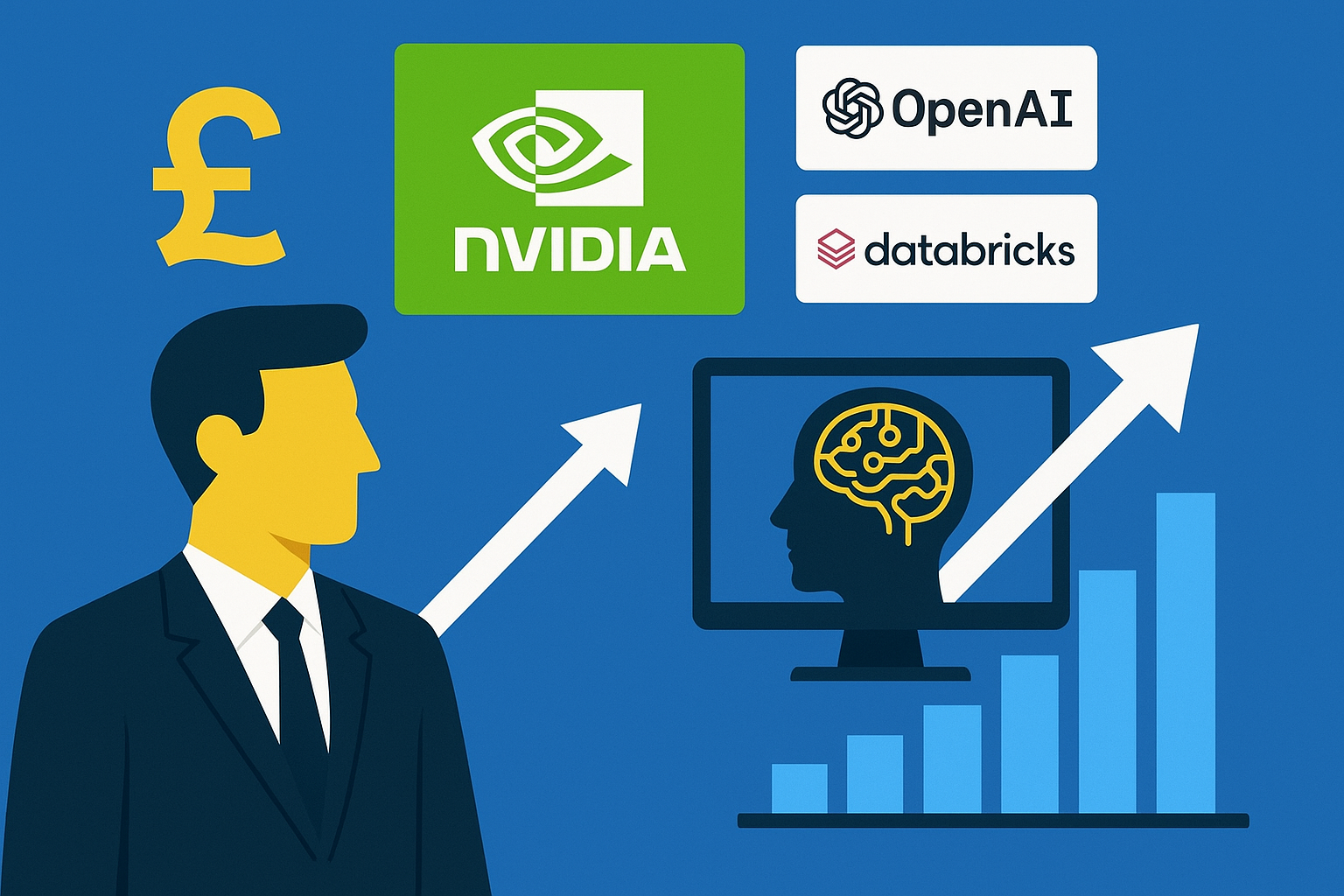The global race to dominate artificial intelligence is accelerating, and Nvidia is no longer content with being just the hardware supplier at its core. According to a recent report by Crunchbase News, the chipmaker is strategically expanding its footprint by investing directly in some of the most influential AI start-ups—including OpenAI, Databricks, xAI, and ScaleAI. For investors, this signals a critical shift: Nvidia is evolving from being a seller of the “picks and shovels” of AI to an active participant in shaping the entire value chain.
Why This Matters for Investors
Nvidia’s dominance in AI infrastructure is well documented—its GPUs are the de facto standard for training large language models (LLMs) and powering hyperscale data centers. But competition is heating up. Microsoft, Google, and Amazon are pouring billions into proprietary AI infrastructure and models. By placing strategic bets on start-ups at the heart of AI innovation, Nvidia is hedging against potential displacement while creating deeper ties with companies most likely to drive the next generation of AI breakthroughs.
Consider OpenAI, the developer of ChatGPT, which has already reshaped enterprise AI adoption. ScaleAI is equally pivotal, specializing in data labeling and model training—critical bottlenecks in the scaling of AI systems. Databricks, valued at over $40 billion in private markets, is becoming a cornerstone in the data analytics and machine learning ecosystem. Nvidia’s stake in these players provides exposure not just to hardware sales but also to software, services, and applications that ride on its chips.
Expanding Beyond Hardware
Nvidia’s strategy mirrors a broader industry trend: ecosystem ownership. Rather than competing with every new AI platform, Nvidia is integrating into their growth trajectories. This is reminiscent of how venture arms at Google (GV) and Microsoft (M12) embedded themselves in the early stages of cloud, biotech, and cybersecurity firms, later yielding both financial returns and strategic synergies.
According to CB Insights, corporate venture capital investment in AI reached over $25 billion in 2024, with Nvidia Ventures becoming one of the more active participants. By targeting companies with established traction, Nvidia mitigates some of the risk inherent in early-stage investing while ensuring that emerging winners remain tied to its hardware and infrastructure.
Future Trends to Watch
- Vertical Integration in AI – Expect Nvidia to push further into AI applications, particularly in enterprise software and robotics, where its chips power real-world use cases.
- Rising Competition – Other chipmakers, including AMD and Intel, may adopt similar investment strategies to strengthen their ecosystem footholds.
- Regulatory Landscape – The growing scrutiny of Big Tech acquisitions may eventually spill into corporate venture arms. If regulators perceive Nvidia’s investments as anti-competitive, it could face oversight similar to that seen in the semiconductor and cloud sectors.
- AI Infrastructure ETFs and Funds – As institutional investors seek diversified exposure to AI, Nvidia’s dual role as hardware supplier and venture backer could enhance its positioning in themed funds.
Risks on the Horizon
While the upside is significant, there are risks. Many AI start-ups have yet to prove profitable business models, and some may burn through capital without sustainable returns. Regulatory risks also loom large, as governments debate how to manage data privacy, AI safety, and monopolistic behaviors in emerging technologies. Furthermore, investors must weigh whether Nvidia’s growing allocation to venture capital could dilute focus from its core GPU dominance—a business that drove $30 billion in quarterly revenue in 2025, according to Nvidia’s latest earnings.
Key Investment Insight
For long-term investors, Nvidia’s expanded reach into AI start-ups strengthens its role as more than just a chipmaker—it positions the company as a central architect of the AI ecosystem. Exposure to Nvidia stock not only captures growth in hardware demand but also provides indirect exposure to the success of leading AI innovators.
However, investors should monitor how Nvidia balances its capital deployment between core operations and venture bets. A disciplined approach could amplify returns; unchecked, it could introduce volatility. For diversified AI exposure, Nvidia remains a cornerstone, but investors may also want to track the performance of its portfolio companies for broader opportunities.
As AI moves from hype to infrastructure-level adoption, Nvidia’s strategy underscores a new playbook: control the rails, then co-own the trains. Investors looking to ride this wave should pay close attention.
Stay with MoneyNews.Today for daily analysis on how market shifts in AI, crypto, and emerging industries shape investment opportunities across the globe.





